I am about to write a note about boat maintainance and yacht design. Before writing this note I wanted to describe my qualifications. None. The best advice I can give the reader is to go buy a book. My impetus for writing this note was a great class Gail and I took in Hamble, UK on sailboat repair. I can not sing enough praises for this course. Its ideal for those that know little and want to learn a framework for understand a bluewater cruising yacht. During the 7 day class I took copious notes which then became an email which I sent TED, our boat builder. He took the time for a detail reply full of time proven advice with a bit of his quirky humor.
The best part of the class for an Antares owner was that the teachers repeatedly laid out what they considered the most reliable design and it matched what Antares had installed. There still was a bit of debate which makes the exchange a fun read. May be some of our readers will join the debate?
TEACHER: When motoring for a long period the water tank will be over pressurized. There should be a pressure valve that dumps water in to the bilge. If this bothers you then run a tap once and while to avoid the hot bilge.
TED: The water system will never be overpressurized. The engine runs at 180deg F. internally and sends some hot coolant to circulate through the water tanks,unless the water boils for some reason, there is no source of ‘overpressure’. The coolant looses some heat on the way there and the tank itself looses some heat also, but presuming it didn’t, the water in the tank can never exceed the coolant’s temperature (180). The pressure relief valve also has a temperature relief function and is the standard design for every domestic water heater. In the event the engine overheats and is run long enough (a much more apparent issue), theoretically the water in the tank could also get overheated and release the valve.
JASON: Is it safe to use hyper chloride bleach in our fresh water system?
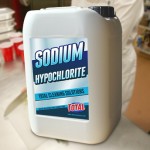
Sodium Hypochlorite
TED: I presume you mean sodium hypochlorite – (chlorine bleach or bleaching agent) or calcium hypochlorite (bleaching powder or swimming pool chlorination compound)? You are making a strong oxidizing agent when you dissolve this stuff in water so keep in mind you have aluminum tanks which will eventually reach some finite lifespan many years down the road, but no need to get there avoidably earlier. (BTW; pop cans,beer cans, beer kegs, milk trucks, water trucks, etc. are all made of aluminum, no need to get concerned on that account.) The amount of chemical you need for water purification is normally quite low, don’t go crazy, the water will be unpleasant in any case if you do. Occasional flushing or the use of specific water purification tabs may be a better idea than guessing at how many jugs of Clorox to dump in for good measure.
TEACHER: You should have a UV filter in the water system.
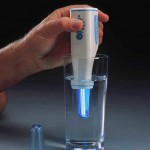
UV Filter
TED: These are another power consumer on board, and yet more technology. I like the idea of keeping the water clean before it goes in as a policy, the watermaker is very good at this.
JASON: Is the water filter also the accumulator for keeping smooth pressure in the water system?
TED: No. An accumulator works by entraining a body of compressible air in the system, (fluids are not compresssible) to act as a pressure storage device. As the filters are filled with fluid, there is no compression taking place. For many years now marine fresh water pumps in our size range have been ‘smart’; they do not require accumulators and pressure switches, the decisions being made by internal pump electronics. On the whole this has worked out to avoid extra componentry but the pump itself has become more of a ‘replacement’ item rather than a serviceable one, thanks to the electronics.
TEACHER: When leaving the boat for a while reduce the pressure in the water system to be kind to the system.
TED: If you like. The pump should be off so you don’t inadvertently empty the tank but the equipment itself doesn’t appreciate ‘kindness” and it is designed for the duty in the first place.
TEACHER: Clean your shower sump frequently especially if your wife has long blond hair.
TED: Shower sumps are noted for their propensity to smell and require servicing, they are widely avoided in favour of directly connected pumps as per the 44 installation. By this means, no stagnant water or accumulations entailed. (I gotta ask; my wife has long dark hair, is that OK d’ya think?)
JASON: Is there a filter for the air release from blackwater tank?
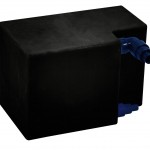
Blackwater Tank
TED: There is no filter. The tank vent is best left as unobstructed as possible to avoid inadvertently pressurizing the holding tank. The filters are rendered useless if you ever get them ‘wet’ with tank contents and certainly won’t pass any overpressurized contents. This may seem unlikely but procrastinating on emptying the tank is common as are the consequent vent blockages. Filters are used to avoid smells escaping when flushing, a problem greater on smaller boats and vent location specific. You can install them if you want, I wouldn’t unless I had an identifiable problem and it trumped the possibility of someone blowing a holding tank.
TEACHER: Dont trust your tank gauges.
TED: Holding tank guages are subject to extraordinary environmental hardships making them problematic, but usually fail ‘full’ rather than ’empty’. Even sight glasses get munged up eventually. Part of boating joy.
TEACHER: Good to have a check valve on the pump out pipe from the holding tank.
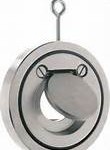
Check valve
TED: No it isn’t. No check valve design is trouble free and that one would have no practical function other than creating another blockage and service point. It would also preclude shooting fresh flushng water back down into the tank when pumping out. This is not standard practice nor any use that I can see, the industry applies Occams Razor to any hardware associated with turds.
TEACHER: UK boat building law requires a flood test? Is Antares required to do this test?
TED: No, the bilge pumps are tested. Universally, certified lifeboats are flood tested to confirm reserve buoyancy and rescue lifeboats are roll tested, perhaps this what is refered to. In North America, if a vessel is small enough to require ultimate reserve buoyancy (typically open recreational boats) then it is tested. I don’t know what bureaucracy has inflicted on harassed UK builders.
There is a reserve buoyacy calculation required by the CE for ocean going catamarans that was done for the 44 and in theory it floats about at deck level if completely flooded, not likely to be upright however by that time unless dismasted, (don’t try this at home).
TEACHER: A bunded boat is one where a spill of diesel is lower than the bilge so the bilge pump does not pump diesel into the harbor when your tank is leaking. I think the Antares is bunded which may be EU law soon?
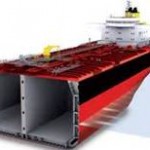
Double Hulled
TED: The bilge being the lowest part of the hull, I don’t see how you can be lower, some confusion here I think. Fuel barges in some locations have come into some recent regulation consideration, and that is the only reference to ‘bunding’ that I know of outside of marina operations that are required to have spill walls to contain boat washing and drainage operations. Double hulled tankers may be considered as bunded I suppose. By definition, bunding would require a containment system equal in volume to the potential container contents, a serious impracticallity in any boat I can conceive of as the fuel system itself is more likely to leak than a tank. However the battery is contained in such an arrangement and the engine has a separate sump under it that will contain leaked fluids up to a point before spilling over into the bilge. Oil floats on water and in the event you get a lot of water plus oil in the bilge, the water will be pumped off the bottom first, stop pumping if you see oil discharge. An automatic pump may be set ‘high’ to avoid pumping the last of the bilge contents overboard (oily stuff), but this is what you do for old slugs with chronic leaks.
Whole institutions exist to interpret existing EU boat ‘law’ (CE approval regs). Rumours and misinformation abound, believe it when you see it.
JASON: Can our engine raw water pump be a bilge pump in an emergency?

Emergency Pump
TED: Not readily. Such an arrangement requires that the cooling water pump suction line be valved to permit a second draw point with a hose to the bilge. The engine cooling system is most vulnerable to problems in the suction circuit. The pump impeller will tolerate a lot of contamination if it is entrained with lubricating water but it will fry very quickly if dry (aeration and blockage). Fooling around sucking out bilge water in an emergency may quickly leave you with no engine and a flooded bilge. This may be an acceptable risk in some situations but when/how often will that occur to justify a permanent installation (I can think of no instance after 40yrs.)? The bilges are small in a catamaran and the Antares has a number of protective compartments making the imagined scenario rather remote but in the event you elected to give it a try, you could close the seacock and pull the hose off to let it lie in the bilge (make sure there is no debris or rags etc. floating around) then run the engine under while watching the exhaust water flow (probably not where you want to be). Some of these kinds of mechanical provisions are applied to boats that are not sensitive to excesses of equipment, weight or complications and are presumably monitored by watch engineers. You have to do a cost/benefit think and realize the ‘cost’ part isn’t just money but reliability and cluttering up otherwise servicable equpment installations. Simplicity is your real friend in a contingency situation, not complication.
JASON: Marlon seacocks are not allowed in EU boats, only metal ones. However, I like the fact that our seacocks are exempt from electrolysis. Are there special tips for these seacocks other that frequent operation?
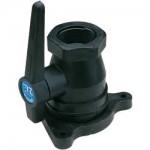
Marlon Seacock
TED: “Forespar is pleased to announce the ISO (International Marine Certification Institute) 9093-2 Certification on all Marelon integrated plumbing systems valves (’93’ Series). The Forespar Marelon Ball Valves and Thru-hull fittings meet and exceed the ABYC H-27 and ISO 9093-2 Standards as presently written in all respects.Note; ISO is the informing body for the CE approval system which regulates EU boats. ” Blah blah
The vaste preponderance of problems I encountered in servicing boat seacocks was related to bronze construction which corroded, leaked, seized with great predictability and was very heavy. Composite sea cocks and piping systems were a blessing gratefully received throughout the boat industry. Nostalgia for the old stuff you could rain with hammer blows doesn’t convince me otherwise.
The ‘seize rate’ for composite seacocks wouldn’t be anything more than that due to growth, at least corrosion isn’t a factor. Forespar doesn’t recommend any lubricant as a requirement but I would probably smear something inoccuous like vaseline on them to give the sea creatures a tougher surface to grasp, for a few days anyway. I am sure there is a plethora of opinion on the internet, but use your own judgement.
TEACHER: Watch out for a calcified escape valve on the water heater. Kaboom.
TED: There is no reason the water heater tank relief valve should be any more prone to problems than the one on your domestic water heater, which you last took apart and examined when? Has your boat or domestic water heater exploded recently? ever?
TEACHER: Have a bilge pump alarm.
TED: The light shows on the switch panel when the bilge pump is running and you can probably hear it if you are sailing. I presume the thought is for a bilge level alarms, which can be installed if you are worried. CE regs are leaning that way but the vast majority of floating boats don’t have dedicated bilge level alarms so this is a precaution.

Dyform Wire
TEACHER: Comments on rigging. Use a bike helmet for climbing the rig. For super safe climbing use a bosuns chair and a descender on a second fixed halyard. Ormiston seizing wire is great for mousing shackles closed. Dyform wire is stronger than similar shaped traditional wire.
TED: Antares shrouds are Dyform wire. This is an engineering decision and not an arbitrary choice.
How do our shrouds attach to the mast?
TED: The shroud connections are Selden’s engineering. The systems used are common to all modern spars, this is Selden’s online catalogue which shows all the details of construction . The Antares main shrouds use T ball toggles.
TEACHER: More rigging thoughts. Place a wear washer on the connection of the boom vang to the tang on the mast to track wear. Halyard exits on the mast should be metal not plastic. Chromed bronze is best with stainless steel. What metal is the shroud adjuster made of?
TED: Stainless ends with chrome plated bronze body is standard construction for cruising turnbuckles in our size range. Stainless on stainless threads will gall and seize due to the plastic nature of the included nickel in the alloy. When handling the rigging off the boat, don’t drag the turnbuckles along the ground as it will scratch the chrome plating on the body. The forestay has a bronze/stainless threaded adjuster within the Furlex gear.
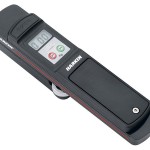
Harken Rig Tune
JASON: Digital Harken gauge for rig tension
TED: Not neccessary, just tighten according to the Selden manual supplied.
TEACHER: Do not stick a screw driver to adjust shroud adjusters, instead use a wrench.
TED: In our size of vessel, you will need a 3′ lever rather than a screwdriver or wrench. ‘Wrench’ is a vague term, lots of them of the toothed variety would destroy the turnbuckle body finish. Use some judgement.
TEACHER: Bulldog grips and some extra rigging wire are a great back up.
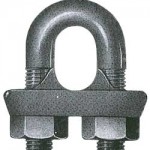
Bull dog grips
TED: Can’t think of what for exactly. The standing rigging is not a crude arrangement you can ‘patch’, the working loads are truely enormous and any failure of the standing rigging will not be repairable with bulldog clamps. The proper cable ends are swaged under tremendous pressure for a reason. You can’t practically handle an arbitrary length of 12mm Dyform, or justify the extra weight, just in case. If you sense an imminent failure you are better to jurry rig some of the running rigging to support the mast then motor for port. If you are tempted to use bulldog clamps, realize that if they manage any grip at all, they will permanently deform the lie of the wire and neccesitate its replacement in any case.
JASON: A hacksaw is great for rig removal, cutters will not work.
TED: You should try to hacksaw through a piece of hard lay standing rigging wire some time. Can’t even imagine trying to do it on a wave tossed deck in a storm. Maybe better to carry a cordless mini-grinder if you imagine you will be in a disastrous situation. Commercially, cable is cut by hydraulic anvil cutter, ratchetting parrot-nose or grinder as far as I know. If you really want to carry a tool you will very likely never use, I am sure you could go and see what the local rigging shop is using for 12mm Dyform, it won’t be a hacksaw.
You should have a hacksaw and extra blades on board in any case for more pratical purposes, so no loss there.
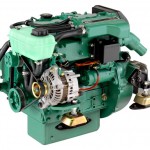
Volvo D2 40
JASON: Do we have direct or indirect fuel injection? (indirect is less noisy)
TED: T’aint that simple. I am actually a certified diesel mechanic (shhh, former life), Some of the noisiest engines I ever worked on were indirect injection, they were also harder to start. Yanmar or Volvo or whoever decide these things and we select based on performance, size, weight, serviceability. I would not make a decision based on second guessing the combustion engineer. However, from the parts diagrams and geometry apparent therein, I see no pre-combustion chambers in the Volvo D2-40 so I beliebve it to be direct injection, the combustion flame is propagated in the cylinder directly above the piston.
TEACHER: A run away engine can be stopped by fire extinguisher.
TED: In the very unlikely event, just stuff a plastic bag or a rag over the air intake. Fire extinguisher chemical is very problematic and halon is poisonous when run through an engine. Don’t lose any sleep over a ‘runaway engine’ unless you own a vintage 2 cycle Detroit Diesel, whence the concerns originated. A diesel engine of our like has no throttle butterfly, modulation of power being purely by means of fuel control. It is therefor remotely theoretically possible that ingested combustible fumes will run the engines uncontrollably, at no load. Some very worn out VW Rabbit diesels were known to have ingested their own crankcase blowby oil fumes after overheating and stopping at the roadside, lots of myth here but a paucity of actual events. Modern injection pump governors have been remarkably reliable for many many decades, but don’t try any DIY.
TEACHER: Tip blue smoke= oily burn, black smoke too much fuel or not enough air, while smoke= burning coolant
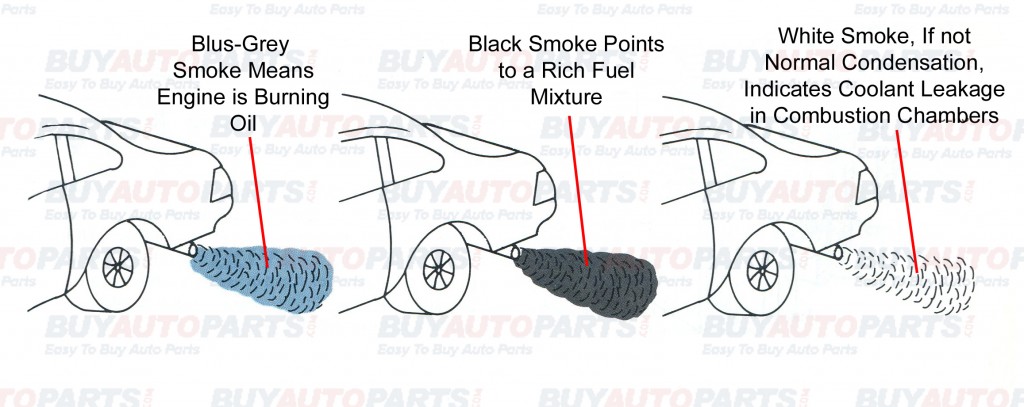
smoke colors
TED: Sorta. Unburnt diesel smoke will appear white and smell distinctly like diesel fuel. Most white ‘smoke’ from a water cooled marine engine is harmless steam. ‘Blue’ smoke may be engine oil if it smells like you are following a ’57 Chev. Black smoke is hard hot burn stuff and indicates there is more fuel going in than there is air to burn it efficiently, this is overload or breathing inefficiencies due to restricted air intake or exhaust. Overload can just be temporary acceleration or hard head sea conditions. The condition is often accompanied by soot on the water and a smell like an old bus (Detroit Diesel again) has just pulled away from the stop. If you have black smoke due to overload, usually it goes away if you back off on throttle a little.
I don’t believe you could distinguish between coolant leaking into the combustion and the regular cooling water steam, it wouldn’t be ‘smoke’ in any case. Antifreeze (the coolant) has that distinctive sweet smell that you get when your car’s heater core leaks or your ’57 Chev overheats.
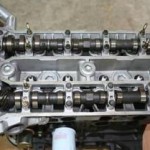
Overhead Cam
JASON: Do we have an overhead cam with timing belt?
TED: No thank god. If a timing belt breaks, many engines with this arrangement will experience a conflict between their rising pistons and mistakenly open valves. A brief dadadada and then the engine stops…
JASON: Do we have variable valve timing?
TED: I can’t answer for you but my valve timing has always been impeccably regular.
The Volvo D2-40 has fixed valve timing. Such niceties as variable valve timing have been applied to electronic engines of larger size than what we contend with in the 44. At some time in the future, the technologies currently impractical for little engines may work their way down, but you need a clearly defined substantial benefit to justify ther complications. There is still a remote chance that you might be able to take your current small boat engine apart some winter in the future when the warranty runs out, and actually put it back together again reasonably successfully, unlike your modern car engine.
TEACHER: Send oil samples away for analysis
TED: Not neccessary unless you are a fleet owner. The process relies on establishing baseline curves for deposits and contamination over an extended working life for the engine. The benefit is primarily the reduction of expense by identifying non-speculative oil change intervals for engines that work non-stop and contain typically 10 gallons of oil $$$. There is also a possibility of identifying any precipitous changes that would indicate arising internal problems, the benefit here being very dependent on fortuituos sample timing. Engine applications such as ours just do not justify the process, but if you really wanted to participate, you would have to send in samples derived from a test cock on the engine (not there now and another real liability) from wherever you are in world.
TEACHER: Avoid oil additives

Oil Additives
The oil grade numbers are viscosity related and the W doesn’t mean much to us unless we are boating in the Arctic. The other letters are additive designations. Here is a ‘simple ‘ reference .
Just use oil specified for diesel use on the container, (C*-* something), the additives are appropriate for the type of deposits unique to diesel combustion. Our engines are not turbocharged or even especially stressed but we definitely want the appropriate additives; they are there to temper heat related viscosity changes, dissolve deposits, suspend particles for eventual entrapment by the filter, neutralize acids (carbonic and sulfuric) formed from combustion products, protect against corrosion etc. Follow the engine owner’s manual recommendations. There is no reason to second guess this stuff.
TEACHER: After changing the impeller, add water to strainer and if no water coming out then hit revs to blow out air bubble.
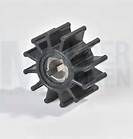
Impeller
As mentioned before, the impeller will fry very quickly if it has no water, by the time you go to the back of the boat and have look then return and look at the strainer again then go out and rev the throttle, well.. You can always put your hand on the pump and feel for heat if you suspect the pump dry. If you do fry an impeller, the blades will be torn off, you need to find them all and fish them out of the system before installing your spare. The air bubble in te strainer will work its own way out if you see flow turbulence indicating pumping. The lid seal has to be good to prevent air being drawn in, also an impeller impediment.
JASON: Do we have gravity check (non return) valves to keep air bubbles in a define portion of the fuel system?
We have the fuel system as recommended by the equipment manufacturers and no installed check valves. Fuel check valves are spring loaded and by their nature impede flow, both suction and pressre. The most likely thing to stop your engine is an impediment to flow or aeration, both of which problems are exacerbated by check valves. Some engines mounted high above their fuel tanks can draw air back up their return lines over a period of time and become hard to start, perhaps this is the source of this item, otherwise it makes little sense, the fuel system should be free of air bubbles on the suction side anyway. Engine manufacturers include such flow control as they need in normal circumstances (us).
JASON: Do we have baffle plates in the fuel tank
TED: Yes, they are a structural neccessity.
JASON: Can we see a core sample of our boat?
TED: When you are in the yard, ask for a cutout from one of the hull openings or thruhulls.
JASON: Have owners asked for an ultrasound?
TED: No, I don’t know what they would be expecting to find in a new boat.
TED: Jason, all your questions are reasonable but I think you need to keep in mind that the pleasure boat industry is fraught with a surplus of enthusiasm for ‘opinion’ . It lacks the hard definitions and financial rationale demanded by industrial endeavors so it tolerates a lot of half baked stuff, posturing, dubious advice and marketing bullshit. For an ocean cruising boat we need to keep a skeptical turn of mind and and eye for what really counts, for our enjoyment and safety.
All those notes…I’m thinking you should have been a marine mechanic maybe?
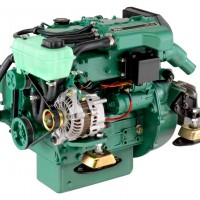















Comments are closed.